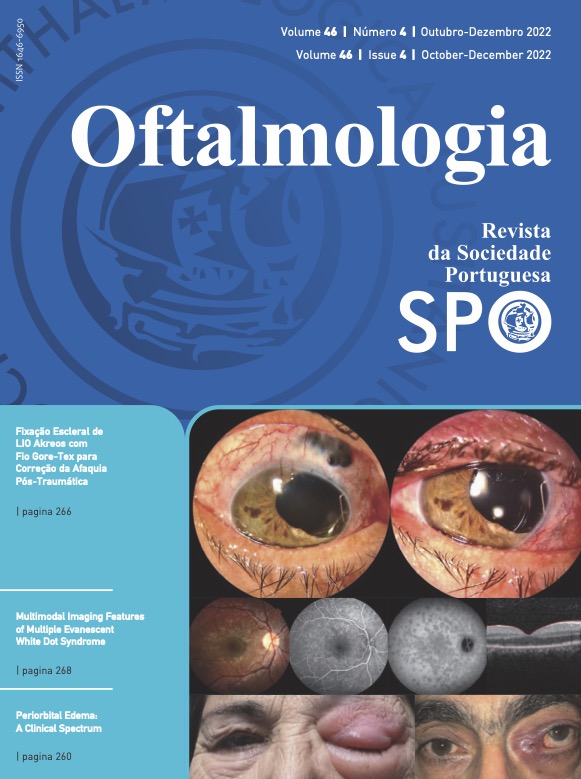IOLzero: A Web Application for Calculations, Outcomes Tracking and Optimization in Cataract Surgery
DOI:
https://doi.org/10.48560/rspo.25966Keywords:
Biometry, Cataract, Lens Implantation, Intraocular/methods, Mobile Applications, SoftwareAbstract
INTRODUCTION: Cataract surgery results can be improved by a data-driven approach: outcome tracking (visual acuity, residual refraction, and complications) as well as optimization (formulas, constants, SIA, ...). Most health record systems in ophthalmology are not tailored to these specific tasks. Alternative software tools that implement some of these analyses are usually commercial in nature and/or locked to a specific biometer analysis pipeline. Many of these calculations are complex and error prone and some of them even impossible to replicate in standard spreadsheets. This hinders the adoption of outcome tracking and optimization by many cataract surgeons worldwide.
MATERIAL AND METHODS: Development of a free web application, named IOLzero (available at https://iolzero.com), using a Python backend, optimized for both desktops, tablets and smartphones. The web application is seamlessly updated with new tools, IOLs and biometers. The surgeon can define his default preferences (preferred incisions, IOL models, formulas, ...). All analysis and calculations follow literature standards, which are properly referenced. Patient identifying data is processed locally (never leaves the browser), ensuring privacy. Individual case data can be exported to conventional text-based electronic health records by user-defined templates. All data can be exported to spreadsheets for further analysis by the surgeon.
RESULTS AND DISCUSSION: The “Patients” module implements a cataract focused registry with preoperative biometry, surgical details, and a final post-operative evaluation. The “Analysis” module can evaluate clinical outcomes (visual acuity, complications, and residual re- fractive errors), formula comparison (prediction errors with graphical evaluation), formula opti- mization (A- constant optimization and mean target optimization for unpublished formulas) and SIA calculation (by laterality, incision type and location). Auxiliary calculators for IOL calcula- tion (SRK/T, Holladay 1, Haigis and HofferQ), Wang-Koch optimization for axial myopia, Cooke- modified axial length for sum-of-segments approximation, second eye refinement, pediatric IOL calculator, multi-device keratometry vectorial averaging, sulcus power adjustment, among other tools, are also available on IOLzero.
CONCLUSION: We believe IOLzero is a valuable tool for cataract surgeons interested in improving their results by a systematic process of data analysis and optimization, while not being locked down to a commercial solution or a specific biometer.
Downloads
References
Melles RB, Kane JX, Olsen T, Chang WJ. Update on Intraocular Lens Calculation Formulas. Ophthalmology. 2019 ;126:1334-5. doi: 10.1016/j.ophtha.2019.04.011.
Gujral T, Hovanesian J. Cataract Surgical Planning Using On-line Software vs Traditional Methods: A Time/Motion and Quality of Care Study. Clin Ophthalmol. 2021;15:3197-203. doi: 10.2147/OPTH.S318935. Erratum in: Clin Ophthalmol. 2021;15:3283.
Retzlaff JA, Sanders DR, Kraff MC. Development of the SRK/T intraocular lens implant power calculation formula. J Cataract Refract Surg. 1990;16:333-40. doi: 10.1016/ s0886-3350(13)80705-5. Erratum in: J Cataract Refract Surg 1990;16:528.
Sanders DR, Retzlaff JA, Kraff MC, Gimbel HV, Raanan MG. Comparison of the SRK/T formula and other theoretical and regression formulas. J Cataract Refract Surg. 1990;16:341-6. doi: 10.1016/s0886-3350(13)80706-7.
Retzlaff J. A new intraocular lens calculation formula. J Am Intraocul Implant Soc. 1980;6:148-52. doi: 10.1016/s0146- 2776(80)80008-5.
Hoffer KJ. The Hoffer Q formula: a comparison of theoretic and regression formulas. J Cataract Refract Surg. 1993;19:700- 12. doi: 10.1016/s0886-3350(13)80338-0.
Fyodorov SN, Galin MA, Linksz A. Calculation of the optical power of intraocular lenses. Invest Ophthalmol. 1975;14:625-8.
Satou T, Shimizu K, Tsunehiro S, Igarashi A, Kato S, Koshimizu M, et al. Development of a new intraocular lens power calculation method based on lens position estimated with optical coherence tomography. Sci Rep. 2020;10:6501. doi: 10.1038/ s41598-020-63546-y.
Wang L, Shirayama M, Ma XJ, Kohnen T, Koch DD. Optimizing intraocular lens power calculations in eyes with axial lengths above 25.0 mm. J Cataract Refract Surg. 2011;37:2018- 27. doi: 10.1016/j.jcrs.2011.05.042.
Wang L, Koch DD. Modified axial length adjustment formulas in long eyes. J Cataract Refract Surg. 2018;44:1396-7. doi: 10.1016/j.jcrs.2018.07.049.
Cooke DL, Cooke TL. Approximating sum-of-segments axial length from a traditional optical low-coherence reflectometry measurement. J Cataract Refract Surg. 2019;45:351-4. doi: 10.1016/j.jcrs.2018.12.026.
Turnbull AMJ, Barrett GD. Using the first-eye prediction error in cataract surgery to refine the refractive outcome of the second eye. J Cataract Refract Surg. 2019;45:1239-45. doi: 10.1016/j.jcrs.2019.04.008.
Trivedi RH, Barnwell E, Wolf B, Wilson ME. A Model to Predict Postoperative Axial Length in Children Undergoing Bilateral Cataract Surgery With Primary Intraocular Lens Implantation. Am J Ophthalmol. 2019;206:228-34. doi: 10.1016/j. ajo.2019.04.018.
Mehta R, Aref AA. Intraocular Lens Implantation In The Ciliary Sulcus: Challenges And Risks. Clin Ophthalmol. 2019;13:2317-23. doi: 10.2147/OPTH.S205148.
Aramberri J. Intraocular lens power calculation after corneal refractive surgery: double-K method. J Cataract Refract Surg. 2003;29:2063-8. doi: 10.1016/s0886-3350(03)00957-x
Wang L, Koch DD, Hill W, Abulafia A. Pursuing perfection in intraocular lens calculations: III. Criteria for analyzing outcomes. J Cataract Refract Surg. 2017;43:999-1002. doi: 10.1016/j.jcrs.2017.08.003.
Downloads
Published
How to Cite
Issue
Section
License
Copyright (c) 2022 Revista Sociedade Portuguesa de Oftalmologia

This work is licensed under a Creative Commons Attribution-NonCommercial 4.0 International License.
Do not forget to download the Authorship responsibility statement/Authorization for Publication and Conflict of Interest.
The article can only be submitted with these two documents.
To obtain the Authorship responsibility statement/Authorization for Publication file, click here.
To obtain the Conflict of Interest file (ICMJE template), click here





